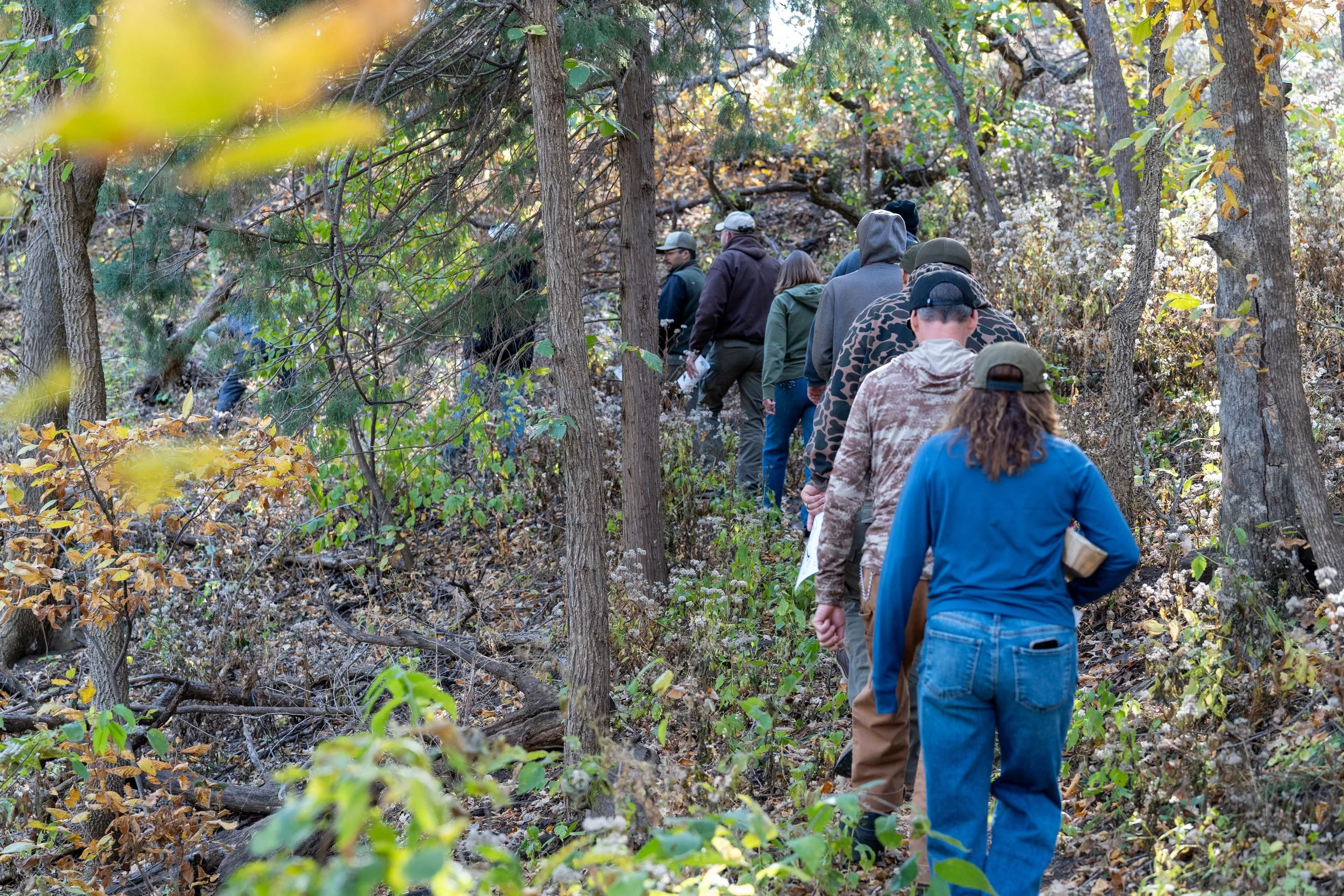Building Nebraska’s Trail Future Together—IMBA Trail Care School
A Statewide Look at Trail Design, Stewardship, and Community Connection
Across Nebraska, trails are no longer seen as “extras.” They are essential community infrastructure—places that connect neighborhoods, boost public health, drive tourism, and provide access to nature close to home. According to the 2026–2030 Nebraska Statewide Comprehensive Outdoor Recreation Plan (SCORP), 99% of respondents use trails, and nearly 60% of those users prefer natural surface trails. That means more than ever before, Nebraskans are walking, hiking, running, and riding on trails that blend recreation with connection.
Meeting that demand requires collaboration, planning, and shared knowledge—and that’s exactly what the 2025 Regional Trail Care School, presented by the International Mountain Bicycling Association (IMBA) and Trails Have Our Respect (THOR), set out to do.
“It’s exciting to see trails finally recognized as a vital part of Nebraska’s recreation plan. Only time will tell, but the future looks bright for trails in our state.”
A Collaborative Workshop for Trail Leaders
Held last month, the two-day workshop brought together state park leaders, community planners, operations staff, and trail advocates from across Nebraska to explore the future of trail development and stewardship.
Through hands-on field sessions and discussions led by Chris Orr, IMBA Trail Solutions educator, participants learned how modern trail systems are professionally planned, designed, and constructed—balancing recreation with sustainability. The sessions emphasized that great trails aren’t “one size fits all”; they’re purpose-built to serve diverse users, from hikers and runners to cyclists and equestrians, and integrated into the broader park experience.
Lessons in Planning, Participation, and Longevity
One of the strongest themes to emerge from the Trail Care School was that great trails don’t happen by chance — they happen by design, communication, and long-term care. Participants discussed how careful planning at the start of a project sets the tone for everything that follows. Taking the time to evaluate terrain, user flow, and maintenance access upfront helps ensure each trail segment is built to last and complements the surrounding environment. As one attendee noted, “Plan, plan, plan — you can’t overstate it.” That early investment in design and logistics saves time, money, and effort down the road.
Another key takeaway was the importance of listening to the community. Trails serve everyone, and inviting feedback from local users, volunteers, and park partners throughout the process leads to better outcomes. Continuous dialogue builds trust, encourages local ownership, and ensures the final product truly reflects the needs of the people who use it most. A well-used trail is often a well-loved one—and that connection starts with inclusion and communication.
Finally, the group emphasized building for the long term. Trails are living systems that evolve with time, weather, and use. Thinking about sustainability, durability, and how a trail will age helps ensure it remains safe and enjoyable for years to come. Long-term maintenance planning—just like the initial design—should be built into every project from day one. When we plan with the future in mind, trails become more than recreation—they become community assets that serve generations.
Throughout the workshop, one message echoed repeatedly: trails are community investments, not just recreational amenities.
“Trails improve people’s quality of life, they’re not just paths in the woods—they bring people together, teach stewardship, and connect us to the land. When we plan carefully, engage our communities, and build for the long term, we create trails that last generations.”
Trails as a Statewide Priority
The Trail Care School reinforced what Nebraskans are already saying: trails matter. They improve public health, enhance outdoor learning, support local economies, and help communities attract and retain residents.
As one participant put it, “Trail building isn’t just about dirt—it’s about people.”
By bringing together professionals, volunteers, and state leaders, the workshop marked an important step toward aligning Nebraska’s recreation planning with the growing demand for accessible, sustainable trail systems statewide.
“It’s one thing for those of us who already build trails to understand their importance,” said Clarke Dolton, one of the participants. “But having leaders from Nebraska State Parks in the room, listening to someone like IMBA’s Chris Orr share the science and process behind trail development—that’s a big step forward for all of us.”
Looking Ahead
The knowledge and relationships built during this year’s Trail Care School will ripple far beyond the weekend itself. As new projects emerge—from local park upgrades to regional trail networks—the lessons shared will help shape a more connected, resilient, and trail-friendly Nebraska.
Every state should have great trails. Thanks to the collaboration of educators, park leaders, and community members, Nebraska is well on its way. A special thank-you goes to the International Mountain Bicycling Association (IMBA) and Chris Orr for sharing his time, expertise, and passion for sustainable trail development. Their leadership continues to elevate how communities across the country—and here in Nebraska—approach trail design, construction, and stewardship.
We also extend our sincere gratitude to Ponca State Park and their dedicated staff for hosting and supporting this event. Their commitment to outdoor education and stewardship provided the perfect setting to explore how modern trail systems can connect people, parks, and purpose. Together, these partnerships showcase how collaboration drives lasting impact for trails and communities across the state.
Let’s build and maintain great trails together—see you out there!
Photos by Eric Freudenburg





